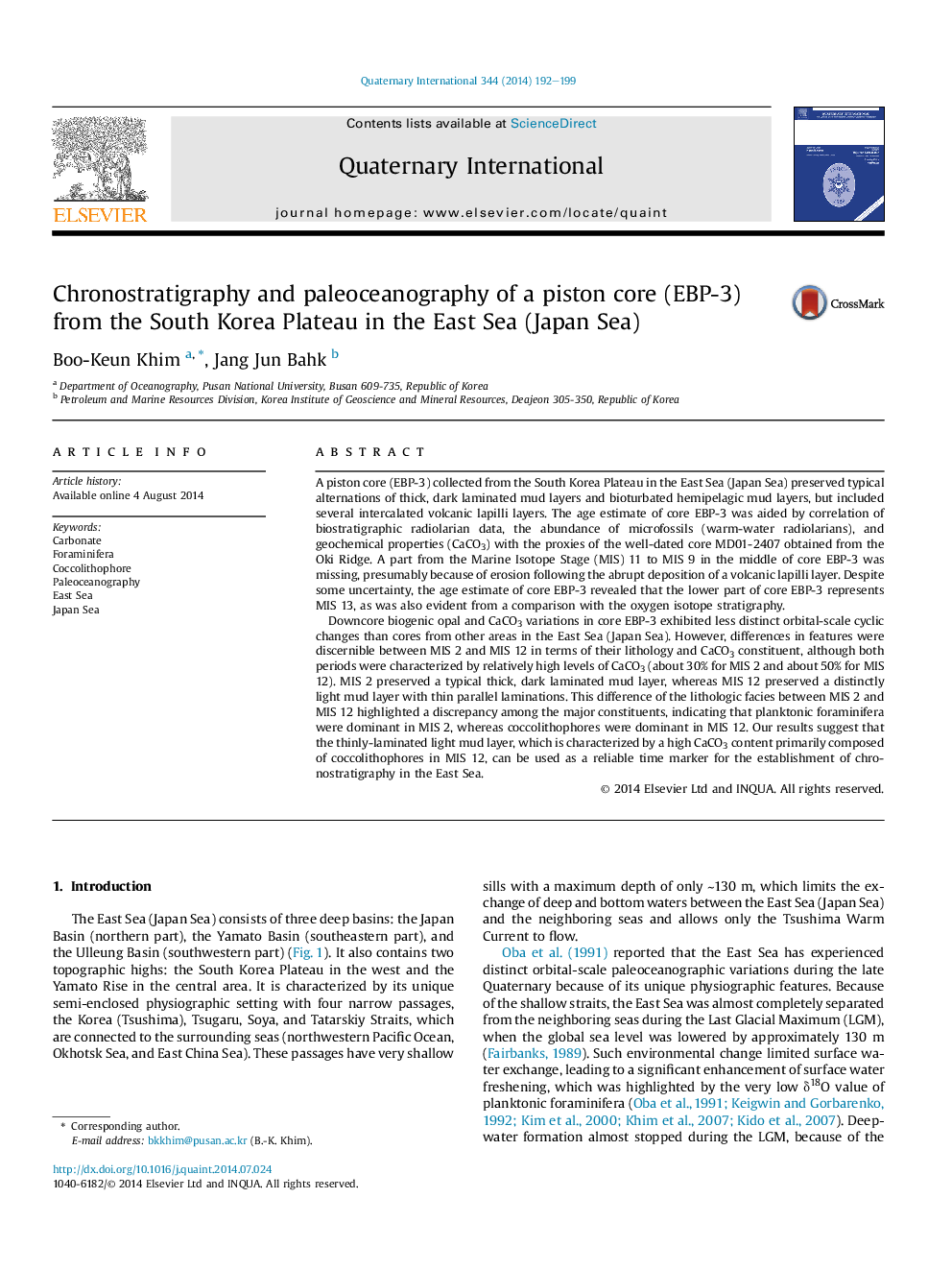| کد مقاله | کد نشریه | سال انتشار | مقاله انگلیسی | نسخه تمام متن |
|---|---|---|---|---|
| 1041215 | 1484152 | 2014 | 8 صفحه PDF | دانلود رایگان |

A piston core (EBP-3) collected from the South Korea Plateau in the East Sea (Japan Sea) preserved typical alternations of thick, dark laminated mud layers and bioturbated hemipelagic mud layers, but included several intercalated volcanic lapilli layers. The age estimate of core EBP-3 was aided by correlation of biostratigraphic radiolarian data, the abundance of microfossils (warm-water radiolarians), and geochemical properties (CaCO3) with the proxies of the well-dated core MD01-2407 obtained from the Oki Ridge. A part from the Marine Isotope Stage (MIS) 11 to MIS 9 in the middle of core EBP-3 was missing, presumably because of erosion following the abrupt deposition of a volcanic lapilli layer. Despite some uncertainty, the age estimate of core EBP-3 revealed that the lower part of core EBP-3 represents MIS 13, as was also evident from a comparison with the oxygen isotope stratigraphy.Downcore biogenic opal and CaCO3 variations in core EBP-3 exhibited less distinct orbital-scale cyclic changes than cores from other areas in the East Sea (Japan Sea). However, differences in features were discernible between MIS 2 and MIS 12 in terms of their lithology and CaCO3 constituent, although both periods were characterized by relatively high levels of CaCO3 (about 30% for MIS 2 and about 50% for MIS 12). MIS 2 preserved a typical thick, dark laminated mud layer, whereas MIS 12 preserved a distinctly light mud layer with thin parallel laminations. This difference of the lithologic facies between MIS 2 and MIS 12 highlighted a discrepancy among the major constituents, indicating that planktonic foraminifera were dominant in MIS 2, whereas coccolithophores were dominant in MIS 12. Our results suggest that the thinly-laminated light mud layer, which is characterized by a high CaCO3 content primarily composed of coccolithophores in MIS 12, can be used as a reliable time marker for the establishment of chronostratigraphy in the East Sea.
Journal: Quaternary International - Volume 344, 10 September 2014, Pages 192–199